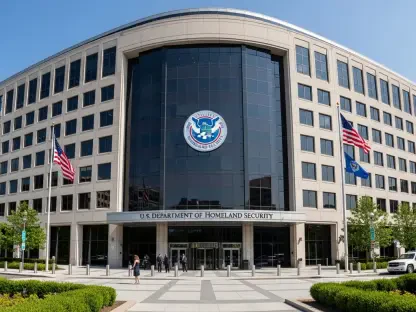In a continent bustling with over 1.24 billion people, the promise of cutting-edge technology like 5G remains a distant dream for most, with only a meager 1.2% having access to these high-speed networks, a striking statistic drawn from a recent comprehensive report by the International Telecommunication Union and UNESCO. This paints a vivid picture of Africa’s digital divide, starkly contrasting with a global average where over 20% of the population enjoys 5G connectivity. While mobile technology has undeniably transformed communication and economic landscapes across African nations, the leap to next-generation networks is hindered by systemic challenges. From affordability barriers to gaps in digital skills, the hurdles are immense, yet the continent has shown remarkable resilience and progress with earlier technologies like 3G and 4G. This disparity sets the stage for a deeper exploration into the state of mobile connectivity, highlighting both the achievements and the steep road ahead for widespread 5G adoption.
Digital Divide and Connectivity Challenges
The digital divide in Africa is a multifaceted issue that goes beyond mere access to technology, revealing deep-seated inequalities in infrastructure and usage. Despite 3G and 4G networks covering 77% and 44.3% of the population respectively, a staggering 710 million Africans reside in areas with mobile broadband but do not use the internet. High costs of devices and data plans remain prohibitive for many, particularly in rural regions where only 23% of the population is online, compared to 57% in urban centers. These figures fall significantly short of global benchmarks, where urban connectivity reaches 83%. The usage gap underscores not just an infrastructure problem, but also a critical lack of digital literacy, preventing millions from leveraging available technology. This situation paints a complex picture of progress intertwined with persistent barriers, where the benefits of mobile connectivity have yet to reach a substantial portion of the population despite notable advancements in network coverage over recent years.
Regional disparities further complicate the connectivity landscape, with sub-Saharan Africa lagging at a mere 38% internet usage compared to a global average of 68%. Within the continent, variations are evident, as Eastern and Southern Africa report 35% connectivity, while Western and Central Africa edge slightly higher at 39%. Rural areas bear the brunt of this divide, often lacking the necessary infrastructure and facing economic constraints that urban centers might mitigate through denser populations and better resources. Affordability remains a recurring obstacle, with many unable to justify the expense of internet-enabled devices or data subscriptions against basic needs. This uneven distribution of access highlights the urgent need for targeted interventions that address not only the physical rollout of networks but also the socioeconomic factors that keep large swathes of the population offline, ensuring that technological advancements do not exacerbate existing inequalities.
Economic Impact and Industry Investments
The mobile sector stands as a cornerstone of economic growth in Africa, contributing an impressive 7.3% to the continent’s GDP, which translates to a substantial $140 billion in economic value. Beyond raw numbers, this industry has been a vital source of employment, supporting 3.7 million jobs across various roles from technical support to retail. Major telecommunications operators have played a pivotal role in driving this growth, pouring significant resources into infrastructure development. Over the past five years, an estimated $28 billion has been invested in sub-Saharan Africa alone, laying the groundwork for expanded mobile coverage. This investment reflects a commitment to bridging connectivity gaps, yet the transition to 5G remains slow, with current access figures highlighting how far the continent still needs to go. The economic ripple effects of mobile technology are undeniable, but they also underscore the urgency of accelerating next-generation network deployment to sustain and amplify this momentum.
Looking to the future, the industry shows no signs of slowing down, with plans to invest an additional $62 billion from now through 2030, much of which is earmarked for 5G expansion. Projections suggest that 5G penetration could climb to 17% by the end of this decade, marking a significant leap from the current 1.2%. Such growth promises to unlock new opportunities in sectors like education, healthcare, and commerce, where high-speed connectivity can drive innovation and efficiency. However, realizing this potential hinges on overcoming existing barriers, including the high cost of infrastructure and the need for widespread digital education. The commitment of major players in the telecom space offers hope, yet it also raises questions about equitable distribution of these advancements. Ensuring that investments translate into tangible benefits for underserved communities, particularly in rural areas, will be crucial to maximizing the economic and social impact of mobile technology across the continent.
Innovative Solutions and Regional Successes
Amid the challenges, Africa showcases remarkable examples of innovation and resilience in telecommunications, with certain nations and regions carving out unique paths to connectivity. Rwanda emerges as a standout, having transformed its telecom landscape through a public-private partnership that established a wholesale open-access 4G LTE network. This model, developed after market liberalization, demonstrates how strategic collaborations can accelerate digital progress, offering a blueprint for other countries grappling with similar issues. Meanwhile, Somalia presents an unexpected success story, where, despite political instability, large telecom companies have built extensive networks reaching both urban hubs and remote areas. These cases highlight the diversity of approaches within Africa, proving that tailored solutions can yield significant results even in the face of daunting obstacles, and they provide valuable lessons for scaling up connectivity efforts continent-wide.
Another promising avenue is the rise of satellite connectivity, which is beginning to fill gaps where traditional infrastructure falls short. With services operating in 14 African countries, satellite technology offers a lifeline to remote regions, recently expanding into nations like the Democratic Republic of the Congo. This development signals a shift toward hybrid solutions that complement terrestrial networks, potentially accelerating access to high-speed internet where laying cables is impractical or too costly. Additionally, international players, particularly from China, have made inroads by providing competitively priced equipment, addressing affordability challenges that hinder progress. While 3G still dominates at 50% of connections in sub-Saharan Africa, followed by 4G at 33%, the gradual integration of newer technologies and innovative delivery methods like satellite services suggests a dynamic shift. These efforts, combined with local ingenuity, lay the groundwork for a more connected future, even as 5G remains a small fraction of the current technological mix.
Path Forward for Bridging the Gap
Reflecting on the journey so far, the strides made in mobile connectivity through 3G and 4G networks across Africa have been nothing short of transformative, reshaping communication and economic landscapes. Investments by major operators have driven substantial growth, creating millions of jobs and contributing billions to the GDP in previous years. Yet, the slow uptake of 5G, with access limited to just 1.2% of the population, reveals persistent challenges like affordability and digital literacy gaps that are most pronounced in rural areas. Regional success stories, from Rwanda’s innovative partnerships to Somalia’s unexpected telecom boom, offer glimpses of what is possible with tailored approaches. These past efforts underscore the importance of addressing systemic barriers to ensure that technological progress reaches all corners of the continent.
Moving ahead, the focus must shift toward actionable strategies that can close the connectivity gap and bring 5G within reach of more Africans. Governments and the private sector should prioritize policies that reduce device and data costs, while investing in digital skills programs to empower users, especially in underserved regions. Collaborative models, inspired by past regional successes, could be scaled to accelerate 5G rollout, ensuring equitable access. Additionally, leveraging emerging technologies like satellite connectivity presents an opportunity to bypass traditional infrastructure challenges, particularly in remote areas. With projected investments set to boost 5G penetration significantly by 2030, a concerted effort to align these resources with community needs will be essential. By addressing both technological and socioeconomic hurdles, Africa can transform its digital landscape, turning the current disparities into a foundation for inclusive growth and innovation in the years to come.









